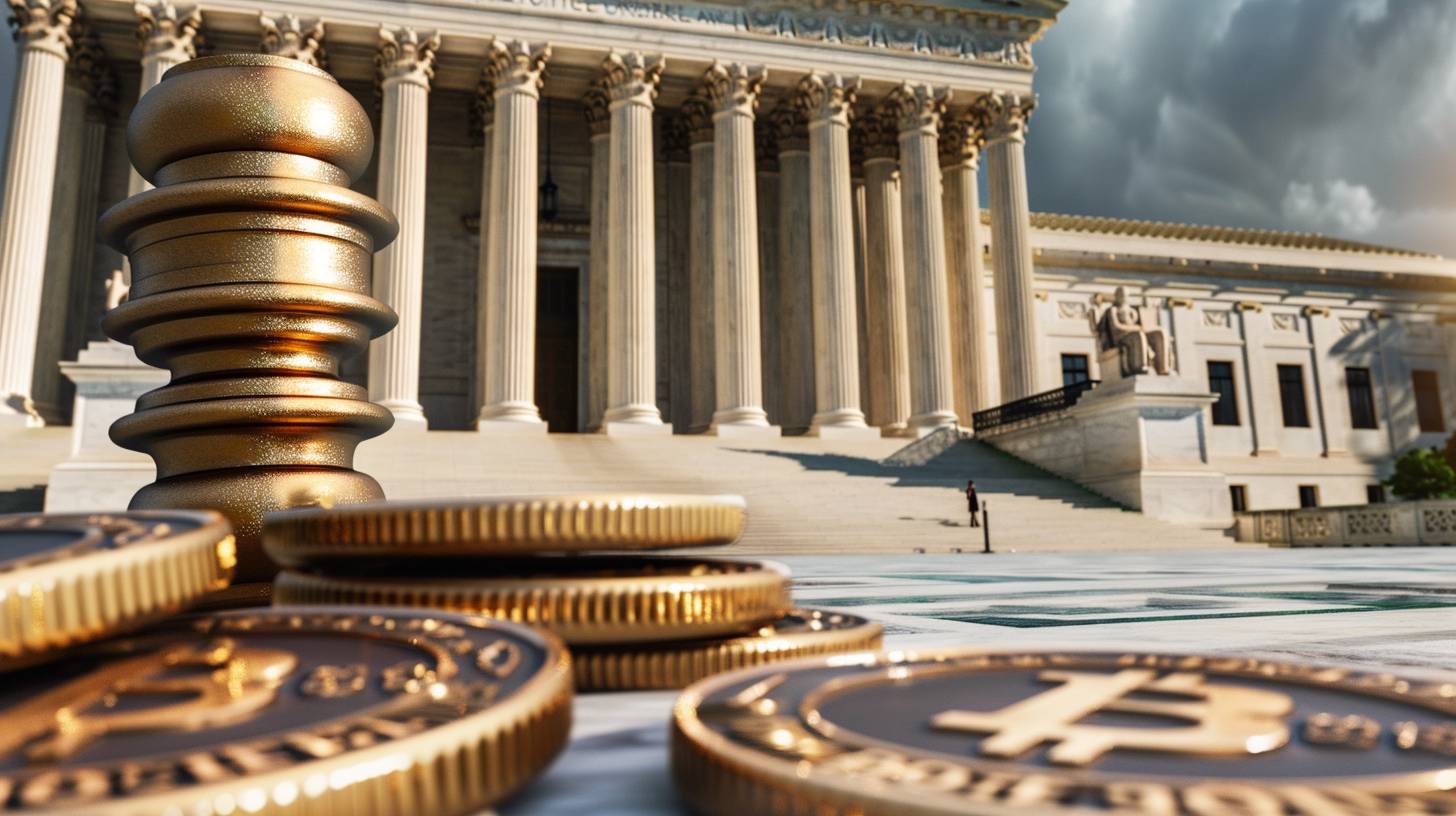
The historical background and importance of Chevron.
To sum up, the Chevron doctrine’s historical background and importance underscore its influence on the formation of administrative law and the power equilibrium between agencies and courts. The Supreme Court’s latest move to overturn this doctrine signifies a significant shift towards judicial autonomy and a more equitable regulatory environment, particularly advantageous to innovative and stable industries such as Bitcoin.
In the initial step, the judiciary would ascertain if the legislation under consideration was ambiguous. If it was straightforward, the court would implement the legislation as it was articulated. On the other hand, if the legislation was connotatively unclear, the subsequent step was executed, in which the judiciary would accord the agency’s interpretation as long as it made sense. This submission to the agencies provided them with notable latitude in interpreting laws, thereby essentially conferring upon them substantial influence to mould policy and regulatory terrains.
The Chevron doctrine, initiated in the case of Chevron U.S.A., Inc. versus Natural Resources Defense Council, Inc., 467 U.S. 837 (1984), has provided a foundation for administrative law for many years. This pivotal ruling demanded that courts give preference to agency interpretations of unclear laws, as long as the interpretation was deemed rational. In essence, it established a two-step structure that usually favored agency power over judicial supervision.
Nonetheless, as time passed, the Chevron doctrine has been subjected to critiques for eroding judicial autonomy and for permitting agencies to exceed their boundaries of power. Detractors have contended that it grants immense power to non-elected officials, thereby allowing them to make major policy resolutions without enough supervision. This worry was especially emphasized in sectors like Bitcoin and cryptocurrency, wherein regulatory ambiguity and overextension can potentially hamper advancement and expansion.
The decision of the Supreme Court to abolish the Chevron doctrine will have widespread impact on regulatory procedures across multiple sectors, such as Bitcoin and cryptocurrency. By declining the immediate deference towards agency interpretation of unclear statutes, the Court has radically transformed how regulatory bodies function and how their maneuvers are evaluated by the judicial system.
This judgment’s most crucial impact is the strengthening of the “major questions doctrine”. This principle suggests that meaningful regulatory measures, with extensive economic and political consequences, need explicit authorization from Congress. In simpler terms, agencies are not allowed to enforce broad-reaching regulations without clear legislative support. This concept is especially pertinent to industries like Bitcoin, where regulatory ambiguity can severely affect operations and investments.
The Chevron doctrine came about during an era when there was an increasing acknowledgment of the specialized skills and knowledge that administrative bodies held. The consensus was that these agencies were more adept than law courts in managing intricate and technical matters within their respective areas of expertise. This respect was viewed as a method to encourage effectiveness and uniformity in the application of federal laws.
Wider consequences for regulatory procedures
Source: bitcoinmagazine.com
The judgement offers Bitcoin miners and other interested parties a more consistent and foreseeable regulatory landscape. Regulatory bodies will now be under more inspection when trying to broaden their regulatory scope, making sure that any major regulatory moves have clear and explicit instructions from Congress. This transition minimizes the potential for abrupt and unforeseen regulatory adjustments that could interfere with operations and investments.
The judgment also carries more extensive consequences for other sectors that fall under heavy regulatory supervision. By stressing the requirement for distinct congressional approval, the verdict establishes a basis that could be utilized to question regulatory actions in different industry sectors. This transition towards increased judicial review and legislative transparency is expected to trigger a cascade effect, encouraging agencies to be extra careful and meticulous in their regulatory actions.
This decision is particularly important for the Bitcoin sector. It reflects the implications of last year’s decision of West Virginia v. EPA, which restrained the Environmental Protection Agency’s overstepping. The ruling, by necessitating explicit congressional approval before agencies can enforce significant regulatory restrictions, establishes a more stable and predictable regulatory scenario. This is vital for Bitcoin miners and other relevant parties who need reliable access to resources and a definite comprehension of regulatory obligations.
The verdict of the Supreme Court to overturn the Chevron doctrine in the case of Loper Bright Enterprises v. Raimondo represents a considerable change in the power dynamics between the judicial branch and administrative agencies. By disagreeing with the idea that uncertain aspects in laws should automatically favor agency interpretations, the Court has restated the idea that courts should apply autonomous judgement when deciphering statutes. This development is considered as moving in the direction of re-establishing judicial autonomy and confirming that agencies do not overstep their granted authority.
This verdict is decidedly positive within the Bitcoin sector. The lack of clear regulations has always been problematic for Bitcoin miners, who depend on consistent and secure access to power and other essentials. The ruling that limits the power of authorities to individually broaden their regulatory control fosters a more suitable atmosphere for Bitcoin mining activities. This is specifically critical in Australia, where the Bitcoin mining sector is expanding, and clear regulation is vital for luring investment and encouraging innovation.
In essence, the Supreme Court’s ruling to overturn the Chevron doctrine marks a noteworthy shift in the power equilibrium between the courts and administrative bodies. The decision strengthens judicial autonomy and mandates explicit approval from Congress for crucial regulatory maneuvers, creating a more consistent and reliable regulating atmosphere. This significantly benefits sectors such as Bitcoin, where regulatory predictability is a prerequisite for expansion and novelty. The repercussions of this judgment, as they progressively emerge, are expected to permanently influence the regulatory setting, molding the functioning of agencies and the scrutiny of their initiatives by the judiciary.
Furthermore, the verdict emphasizes the crucial role of legal supervision in the regulatory procedure. It mandates courts to use autonomous discretion while decoding the laws, ensuring that administrative bodies do not surpass their given authority. This shift toward increased judicial autonomy is perceived as a protective measure against regulatory excess, shielding industries from onerous and possibly whimsical rules.

